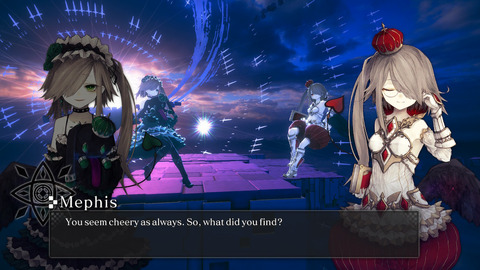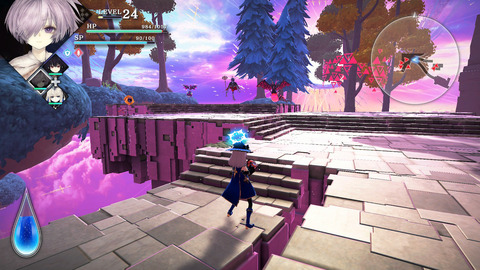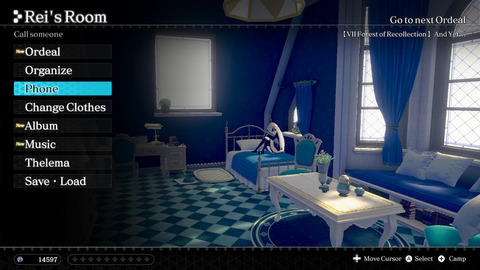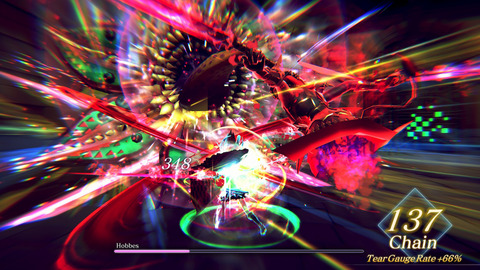Before getting into Crystar, I was unaware that the game, released for PlayStation 4 in 2019, still has as of this writing the highest user score on Metacritic for the RPG category on PS4, ahead of NieR: Automata, Persona 5 and especially The Witcher 3. If this is above all indicative of various biases in the rating sites, especially since Crystar is more an action game than an RPG, there are nevertheless real good reasons to this surge of sympathy.
Knowing how to raise the stakes
The game puts us directly in control … of an amnesiac butterfly. And if memory loss has become a commonplace in video games, here it is well justified and above all very transitory: we play a soul who, as long as she doesn’t know who she is, has this form of a disembodied butterfly.
After a few minutes of moving around in an environment that does not encourage optimism and listening to the complaints of the various souls in pain of the place, the identity returns to our butterfly which is called Rei Hatada and which then takes the form of a high school student. Very quickly, a butterfly accompanying him turns out to be his sister Mirai before the latter disappears, taken to the depths by a monster.
Mephis and Pheles then arrive, who introduce themselves as the managers of this place which is purgatory and offer Rei to become their Executor in order to save Mirai.
I won’t say more so as not to reveal everything about this introduction which ends with an anime on the song can cry to conclude about ten minutes which plunged me directly into the story.
This staging is enhanced by the full dubbing of the dialogues which is absolutely perfect. On this kind of game, I’m more used to putting on Japanese dubbing, but we also have a great intensity put into the work of the English actresses. On the other hand, neither dubbing nor translation into French on the horizon.
Action first
The goal for Rei is to save Mirai by collecting IDEA, crystals from the tears of those who have a clean conscience.
To do this, you have to go ever lower in Purgatory by destroying Ghosts and Revenants:
– Ghosts have had their souls fragmented, causing them to be reborn as speechless monsters
– the Ghosts have regained their own consciousness, they are gifted with speech and their goal is to recover souls in order to reach the revivalthat is, the return to life of the soul
As an Executor, it is by destroying these enemies that you earn crystals (which serve as in-game currency to buy healing and other potions), but also the torments of the Revenants.
In third person view, we move with the stick left, the right being used for the camera (neither more nor less capricious than in most games). We have a weak blow and a strong blow that allow fairly simple but necessary combos, because they can lead to the opponent falling, thus rendering him defenseless for a few seconds.
There are also special moves – up to 4 that can be assigned to a key combination – which use the character’s SP gauge, limited to 100, which fills up with the basic moves.
No parry possible, you have to manage with a dash that goes in the direction you indicate.
If at the start we only play Rei, we are joined by three other characters with quite distinct play styles. A simple key allows you to switch from one to the other either to adapt to the enemies present or to recover a little life for the character put to rest. The rise in level of the four characters remains roughly equivalent, because even out of combat the characters gain 80% of the character’s experience in game.
It is not in this compartment of the action that Crystar pulls out of the game, because the combat system is simplistic, the enemies are devoid ofAI and are satisfied with a very specific attack model according to their type. In the same way, the level design is minimalist: purgatory consists of interconnected platforms with monsters that do not leave their area, there are few secondary paths and we only go through them to gain a little more experience and torment than only taking the shortest route.
Nevertheless, the fights are not an absolute purge either, because you have to be careful since certain combinations of monsters can be complicated to manage and health can quickly drop. Healing potions can be put into automatic mode, which is useful for life, but less so for status ailments that are so common that the stock drops too quickly if left to use up at the slightest occurrence.
There are some boss fights, more or less interesting, but generally trivialized by the Guardians who are an entity that each fighter has and which allows a big increase in damage and to launch a fairly devastating ultimate attack via a tear yellow which is fills either by fighting or crying (which consumes SP). When not activated, these guards can trigger randomly to defend us or save our lives.
I found that the levels were sometimes a bit too long, but that’s mainly because what’s most interesting in the game is its story.
Above all the atmosphere
When we’re not in purgatory, we find ourselves in Rei’s room which serves as a hub.
Via phone calls (sic), Rei can contact her adventure companions, but also take her instructions from Mephis and Pheles.
Rei can also pet Thelema her adorable dog, consult an album containing a glossary of enemies (which are above all differently colored variations of a few models), statistics, but also the memories of the dead which are sequences with tortured drawings which relate the lives generally not very cheerful of the protagonists.
It is also from her room that Rei can cry to transform the recovered torments into equipment. These vary in attack and defense statistics (physical and magic), are combinable to obtain an improved version and can for some undergo random modifications which can bring immunities to certain alterations of status and I confess to adore the one which allows to no longer see its controls reversed.
The deeper we go into Purgatory, the more questions Rei asks herself, the more the atmosphere becomes heavy and a question asked at the start of the game takes on more and more meaning.
Graphically, the game doesn’t sparkle, but it’s pretty overall, first of all through the manga-style characters for the dialogues, but also the sets and models that haven’t been sacrificed too much compared to the PS4 version. On the contrary, the clipping is very present with especially buildings that sometimes appear late, but it was probably a sacrifice to make to have a fluid game. And then, these elements which pop being purely decorative, it’s not a big deal.
The version Switch comes with the DLC of the PlayStation 4 version and we have several clothes to dress our characters, but personally I left almost everyone with the basic clothes which are very good and especially fittings with the comic version which, it does not change even if I have no doubt that some players have opted for a team in swimsuits. Note however that one of the clothes, portable by anyone, allows you to have 10% reduction at the merchant of objects.
The music ranging from melancholic to angry always underlines with adequacy what is happening on the screen.
Love it or hate it
Crystar is one of those hard to recommend games while still being a long remembered gaming experience.
The combat system with its repetitiveness and lack of depth will inevitably block a certain number of players, which will unfortunately make them miss out on a gripping and poignant story.
What also won’t help is that the game is priced at triple A when it clearly doesn’t have the attributes. I rather want to advise those who would be interested to wait for a promotion on the title which will inevitably arrive, or even to go to PlayStation 4 if playing on Switch is not essential.
As far as I’m concerned, despite its faults, Crystar will be a remarkable game thanks to its unique atmosphere and its remarkable characters, and that’s already something unusual.
Tested by Aragnis on Switch with a version provided by the publisher
.
[related_posts_by_tax taxonomies=”post_tag”]
The post Crystar review – Cry me a river appeared first on Gamingsym.




